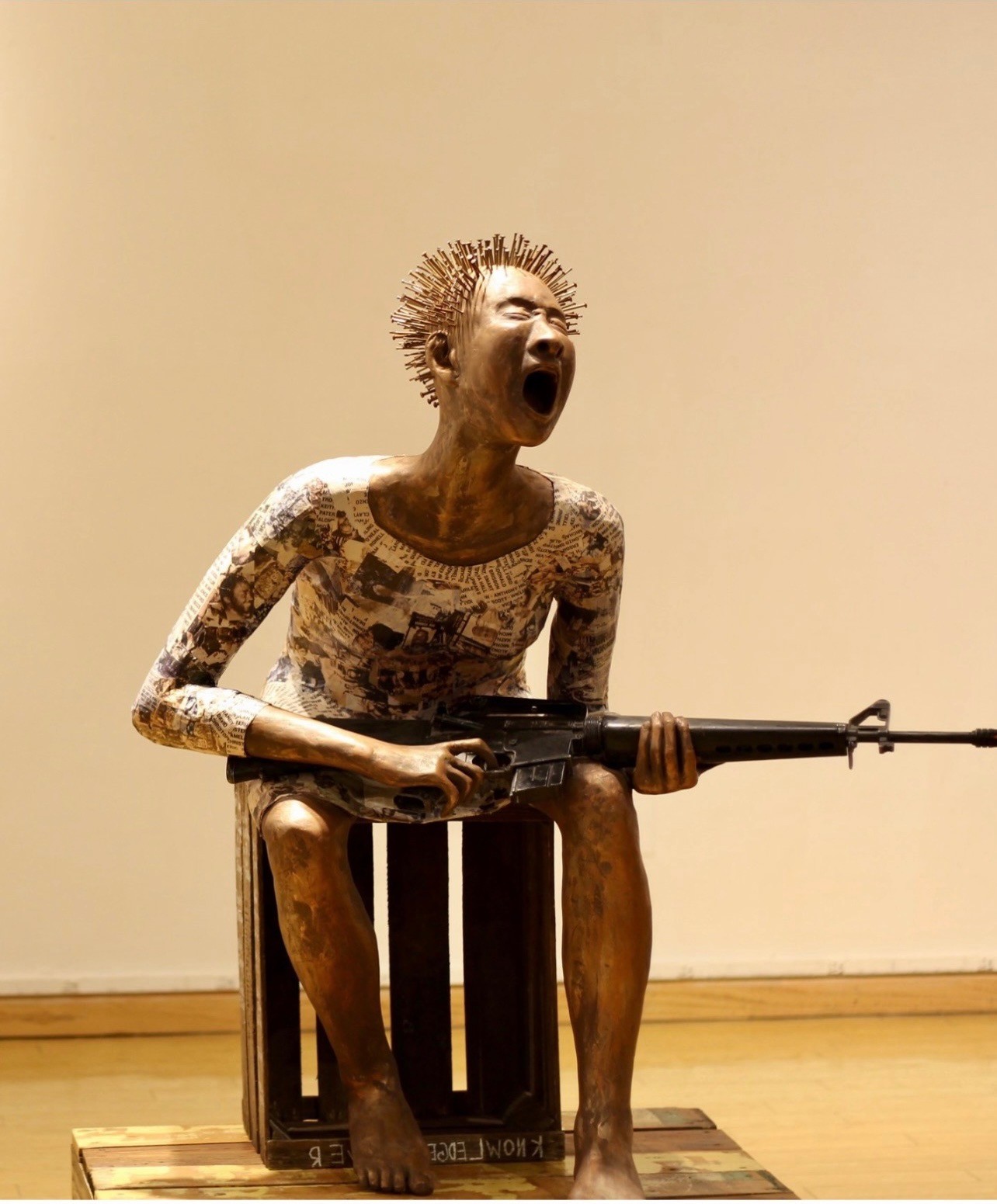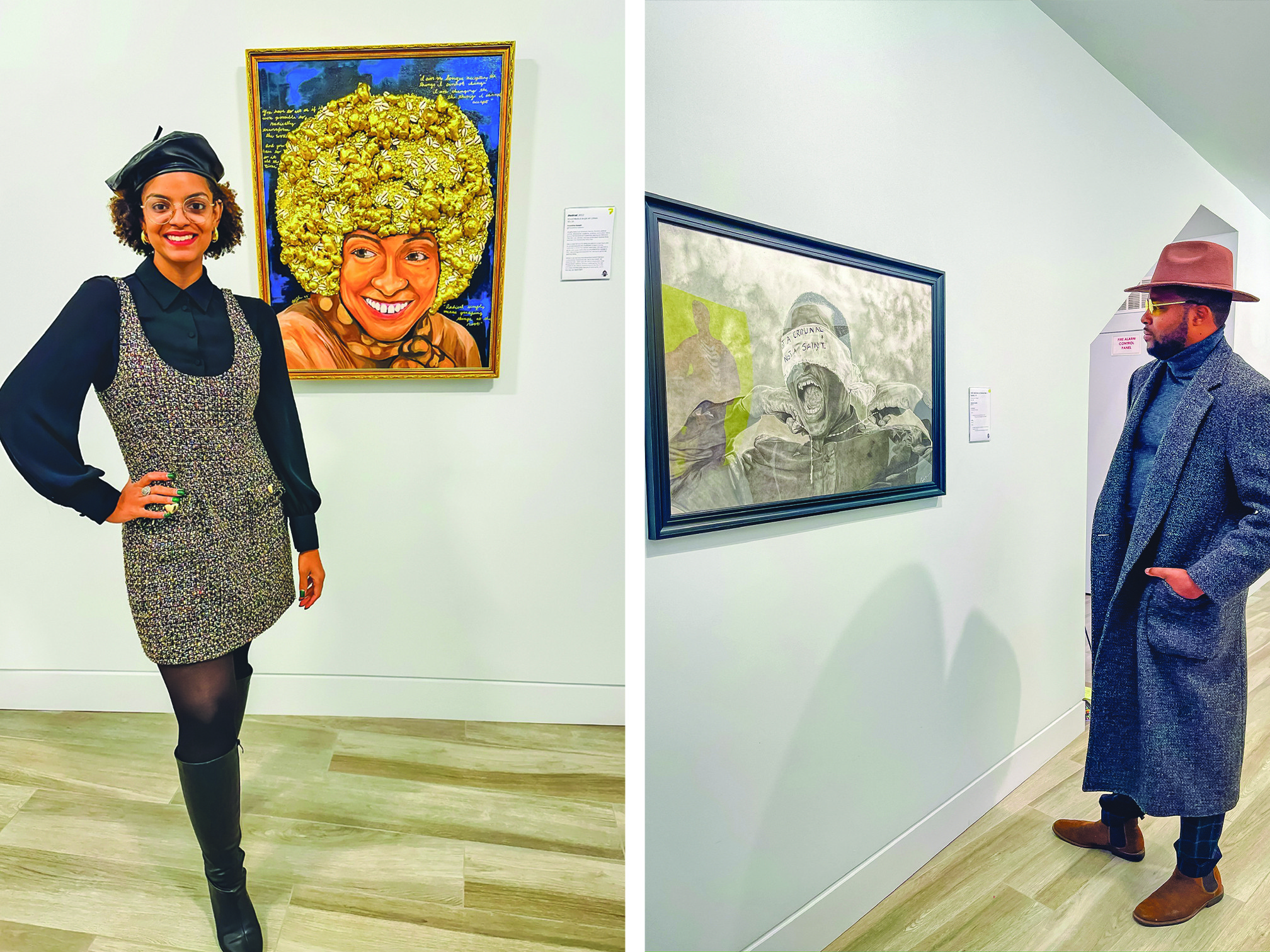Black Power Exhibition at Southampton African American Museum Shows Influence of Creativity

Nemaiah Hargrove’s imagined superhero is an African queen from the planet Zore. She has superhuman strength and a staff that’s able to take on any shape or form.
“Her power includes the ability to see five minutes into the future,” reads the inscription on the art piece. Hargrove is a 10th grader, a teenager who has the acumen to know that foresight is a quintessential trait — empowering, possibly life-saving.
Hargrove’s watercolor painting, titled “Shatisha,” is featured in the traveling art show Black Power: The Revolutionaries, curated by Frank and Kilsi Bold of the Bold Art Society. The exhibit is currently on display at the Southampton African American Museum (SAAM) through March 30, serendipitously during Black History Month.
A series of fortunate circumstances brought the exhibit to Southampton. Several weeks back, Frank Bold had reached out to Brenda Simmons, founder and executive director of SAAM, requesting to come to the museum to film and interview her for a series he was producing. After the interview, they had an engaging conversation that led to him bringing the Black Power exhibition to SAAM.
“That has always been my heart’s desire — to give young or unknown artists exposure,” Simmons says. “So that’s basically how it all happened.”
Black History Month serves to commemorate African Americans who have helped shape our country. The Black Power exhibit brings to light the significant triumphs and sacrifices that Black individuals have made throughout our history.
“This exhibit is extremely timely and of great importance and significance in light of the undergirded intense vibe in the country,” Simmons expresses.
The Bolds’ Black Power installation showcases art from seven professional artists. The theme highlights revolutionary figures from the 14th century through the present who were part of the African diaspora. The criteria for being selected had three components: artistic ability, passion for the movement and involvement in the community.
Five high school students from Innovation Charter High School in East Harlem were also chosen to showcase their art. The Bolds, both New York City high school teachers, are immersed in the arts themselves. Frank is a writer, director and producer of plays. Kilsi is a bilingual content creator and event curator. As a couple, as activists and as humanitarians, they developed an extracurricular program that would give teens exposure to opportunities in the arts. More than 2,000 students have taken part in this initiative to date.
“The idea is to bridge the gap between students and professionals in the arts,” explains Frank Bold. The goal is to expose kids to careers in the art world — from museum curators and fine artists to teachers and multimedia creators. There are dozens of paths an artist can take, and it’s the Bolds’ mission to show them the way.
“Society is unfair,” he says. “In sports, there’s a clear-cut path for athletes. They get recruited to a college or a team. For artists, that’s not the way it works.”
For the Black Power exhibit, students had to invent their own version of a superhero, describing their unique powers and creating a piece of artwork through a medium of their choice — watercolor, acrylic, crayons, even digital.
“It empowers them mentally and spiritually that they are not the negative stereotypes constantly seen on TV,” Simmons says. “I applaud Frank and his beautiful (wife) in establishing Bold Society.”

Simmons is intensely committed to fostering an appreciation of African American culture in the community, preserving the past, and educating both adults and children alike through museum programs and exhibits. “It’s a labor of love to leave a legacy in the Village of Southampton and in the hearts and minds of all who enter,” Simmons says.
“What does ‘Black Power’ mean to me?” she asks. “We are a powerful people! In reality, our ancestors are intellectual, brilliant and powerful, proud kings and queens, which, as an advocate and activist, I constantly educate and remind people and myself.”
For Linda Mickens, one of the professional artists represented in the Black Power show, working with her hands was a natural ability she discovered during her teen years. Crafting with her girlfriends at the age of 14 slowly evolved into a passion for sculpting. She took a strong liking to molding and shaping things, and took classes to sharpen her skills.
But life had different plans for her, however, and she followed the practical track through a career in nursing. Two decades passed before she reunited with her craft. When she assimilated with her art after a 20-year hiatus, her pieces were made of bronze. She soon determined bronze was expensive and she needed to find new material. Mickens discovered paper was an alternative — it was affordable and could be layered onto a wire frame for the same effect.
Inspired by her roots and impacted by intolerance, her sculptures explore the intersection of racism and her Southern heritage. Her “Redemption” sculpture, which depicts a seated woman holding a gun, was selected for the exhibit.
“I use the gun as a representation of defending herself, not so much that she will use the gun,” explains Mickens. “For women and children especially, it’s more about when we can just stop having to defend ourselves.”
Many of her renderings have arching torsos, faces stretched toward the sun, which she says is a representation of pride. Her art honors her ancestors, fueled by poignant moments throughout Black history. Mickens also sculpts floating angels, which she began creating after a surreal encounter with a woman she deems was an “angel on Earth.” This divine experience left an indelible mark on her creative spirit, and compelled her to begin crafting these celestial figures.
So what does “Black Power” mean to Mickens?
“Educating ourselves about our heritage, knowing how we got here, is so important,” insists Mickens. “Knowing the truth is grounding, and this art reflects our story.”
Powerful art such as hers can be viewed now in Black Power: The Revolutionaries at the Southampton African American Museum. SAAM is the first African American site to be historically designated in the Village of Southampton and the first Black barbershop to be transformed into a museum in the country.
For more information or to book a tour, visit saamuseum.org.



